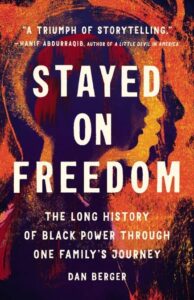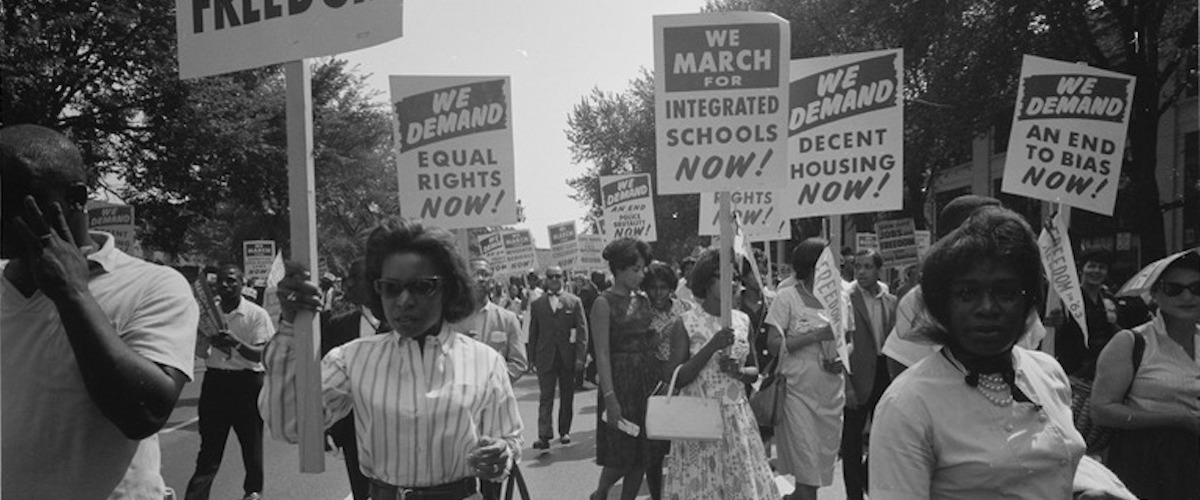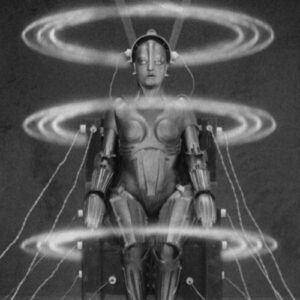The Mississippi summer project was a coordinated effort among four civil rights organizations—SNCC, the Congress of Racial Equality, the NAACP, and the Southern Christian Leadership Conference—working together as the Council of Federated Organizations (COFO). But mostly it was SNCC. It placed volunteers at the knife’s edge of jail, beatings, and death. Volunteers, college-aged youth, were asked to bring at least $500 in bond money with them. As SNCC staff, Gwen Robinson (now known as Zoharah Simmons) was spared this request.
It was irrelevant anyway, since the only money to her name was her $10 weekly salary. SNCC had dubbed the initiative the Mississippi Challenge: the frontal assault on racism in what seemed to be the most racist state. Gwen viewed Mississippi as hell on earth—the most terrifying place she could imagine.
As the Freedom Summer training wrapped up in Ohio, SNCC staff informed Gwen that she would be working on a project in a town called Laurel. They introduced her to the two men she would be working with, Lester McKinnie and Jimmy Garrett. While both men had been Freedom Riders, Lester had worked in Laurel as SNCC’s field secretary in 1962 and was selected as project director. Gwen was glad to be paired with someone who knew the area, and she was eager to begin teaching the Freedom School curriculum she helped develop.
But she was shocked that the other project staff were both Black. To her, the whole point of Freedom Summer was to leverage the possible protection that white Northern volunteers might bring with them to Mississippi. Black suffering had long failed to force federal intervention against the segregationist state government.
In building support for the project, SNCC had made it plain that a “large number of students from the North making the necessary sacrifices to go South would make abundantly clear to the government and the public that this is not a situation which can be ignored any longer, and would project an image of cooperation between Northern and white people and Southern Negro people to the nation.” Yet Gwen observed that her group included neither white nor Northern students (Jimmy was from Los Angeles, by way of Texas and Louisiana). She protested: Why create an all-Black project?
The answer from SNCC staff was not encouraging: It’s too dangerous to send any white people there. To make matters worse, Laurel had little movement infrastructure. They would have to create it from scratch. She wished, in that moment, that she still had a home to return to.
Gwen listened intently as Lester explained how to stay safe in Mississippi. Mostly, though, she tried to sleep off her fears on the drive from Ohio. It was only when they crossed into the state that her comrades woke her. Gwen expected the worst. Stories of slavery and lynching rang in her ears. But there were no monsters or goblins waiting for them on the tree-lined road. The landscape reminded her of Memphis. The fear of Mississippi had so overwhelmed her imagination that she was surprised to find the sweet smell of verbena, the bright blue and purple hydrangea, the quiet grace of cedar and oak trees.
Freedom Summer volunteers had to maintain a low profile as they got established in Southern communities. Her team started out in Hattiesburg, the closest city to Laurel where SNCC supporters could house them. One of the largest Freedom Summer projects, Hattiesburg was bustling with activity. The trio spent about a week there, learning from that project while driving thirty miles north to Laurel every day.
Laurel was far away from the Mississippi Delta, the eighteen-county region that garnered much of the national attention that summer. The town sits in Mississippi’s Fifth Congressional District, the heart of Jones County, in the southeastern part of the state. During the Civil War, Jones County was home to a group of Confederate deserters who pledged fealty to the United States, sabotaging some Confederate supplies. The rebellion’s leader created a family with a woman enslaved by his own grandfather, and they all lived together after the Civil War. A century later, however, this radical past was hard to find. The Klan was known to have its headquarters near Laurel, and most Black people were scared of the movement that Gwen, Jimmy, and Lester represented.
An internal assessment drafted before Freedom Summer held that Laurel was “one of the more moderate areas in the state, and harassment should be minimal.” At the same time, SNCC estimated that the local Black leadership was “conservative” and that “receptiveness to the COFO program has varied from lukewarm to cold.” There was no easy assignment in Mississippi.
Day after day, Gwen and her two compatriots walked up and down the town’s hot, dusty streets knocking on people’s doors. They hung out in barbershops and anywhere Black people were, talking to them about their lives and about the summer project. Wearing the SNCC uniform of blue jeans and a work shirt, the trio worked to blend in to the working-class Mississippi aesthetic.
Three local NAACP activists gave them the names of residents they thought might be receptive to the project. But the trio had suffered enough fearful rejection to keep their hopes modest. When Gwen stepped on the porch of a wooden house and knocked on the door, a fifty-year-old woman named Eberta Spinks answered. Are you one of those Freedom Riders? Mrs. Spinks demanded. Hesitantly, Gwen said, Yes, ma’am, unsure whether that would be welcome news. Fortunately, it was. Come in, she said. I’ve been waiting on you all my life.
The schools would make up for the education the state denied Black people and provide a communal experiment in freedom.Eberta Spinks was the kind of person who made Mississippi Freedom Summer possible. One of eighteen children, she grew up taking care of friends and neighbors. She was a native Mississippian, ebullient and well known in her community, and committed to bettering the state. She had two biological children and was the foster mother to eight others. Mrs. Spinks had just retired from working at a meat packing plant, and her husband, a union man, worked at the Masonite plant making insulation board and doors.
Mrs. Spinks brought Gwen into her household, which she shared with her husband and fourteen-year-old son. She gave Gwen a bed. She also gave Gwen a curfew, expected her to report her comings and goings, and required her frequent attendance at church. And when she found out that Gwen wasn’t alone, Mrs. Spinks convinced her neighbors, Carrie Clayton and Susie Ruffin, to open their homes too. She has a bigger house, Mrs. Spinks said of Ms. Clayton, and white folks consider Ms. Ruffin “crazy.” The Laurel Project had finally established a beachhead in Laurel.
With their living quarters established, the three SNCC staffers set up an office—initially, on Mrs. Clayton’s back porch. When it rained, the SNCC workers would hurry to get their typewriters, papers, and mimeograph machine inside. Soon they rented another place, a trailer without a bathroom. From there, they would coordinate their voter registration efforts and build the Freedom School. Voter registration would challenge white supremacist political power, while the Freedom School would equip Black Mississippians with the intellectual resources and collective self-confidence of citizenship. The schools would make up for the education the state denied Black people and provide a communal experiment in freedom. Gwen was excited to teach. Even if she had disobeyed her family by coming here, she might still honor the spirit of their wishes for her by becoming a teacher.
Then Lester McKinnie disappeared.
It was just after July 4, and the group had been in Mississippi for less than two weeks, in Laurel for an even shorter time than that. Gwen feared the worst. Lester had firsthand experience in the state that she lacked. And the bodies of three Freedom Summer volunteers kidnapped weeks before remained missing.
McKinnie’s disappearance left the fledging project in Laurel without a director. When she wasn’t calling local jails to track down Lester, Gwen phoned SNCC offices in Mississippi and its national office in Atlanta. Who can you send to take over as project director? she inquired. And how soon can they get here? Instead, they told her to do it. She pleaded for someone else, anyone else. Listen, SNCC’s executive secretary Jim Forman told her, You can do this. You’ve got to step up. I’m trying to find somebody to send, but we don’t have anybody right now. Everybody’s tied up. So we need you to become the project director. Forman tried to reassure her. You’re from the South. You’ve been to jail. Don’t worry.
Not for the last time, Gwen’s determination overshadowed her fear. What else could she do? She had sacrificed her family to be there, and she wasn’t going to abandon the effort. She was now the project director.
Luckily, the project had already developed strong momentum in that short time. With Lester’s fate still uncertain, on July 9 Gwen led a mass meeting of eighty-five people, the majority of them teenagers, at the New Bethel Baptist Church. The town’s youth were eager to challenge segregation—“they have nothing to lose,” Gwen told a reporter—and the next day more than fifty kids signed up for the Freedom School. Lyndon Johnson had signed the Civil Rights Act a week prior, outlawing discrimination by race, sex, color, or creed.
Yet segregation was so deeply entrenched in Mississippi’s social, political, and economic relationships that no one, Black or white, thought national law applied in the state. When the teenagers, many of them members of the local NAACP, pledged to test the Civil Rights Act by visiting downtown businesses, Gwen secured legal funds and public support from SNCC. But hospital funds were equally necessary: Within forty-eight hours of the mass meeting she had organized, ten whites surrounded six Black youth inside a five-and-dime. The mob threw an eight-year-old to the ground, hit a twelve-year-old with a baseball bat, and slashed a fourteen-year-old while local police watched. Racists cut another fourteen-year-old in the face, neck, and arm later that day. These attacks came days after another racist mob had used razors to slash two Black youth seeking service at a local hamburger stand.
While tending to the wounded youth, Gwen found Lester. It took two days of panicked phone calls—including to the FBI agent in Laurel, a man discomfortingly named Robert E. Lee—to discover that he was in jail. Unbeknownst to anyone, McKinnie had missed a court appearance for a sit-in he did in Jackson two years earlier, and there was a warrant for his arrest. Officials were threatening to send him to Parchman, the state penitentiary, for five years. SNCC’s lawyers negotiated a compromise: let him go and he would agree not to set foot in the state for at least five years. He accepted the deal. Besides, Laurel already had a new project director.
The freedom fight taught everyone, SNCC worker and Mississippi resident alike, to reach beyond materialistic values.On July 21, white supremacists burned down a Black nightclub in Laurel, threw a rock—signed “KKK”—through a window of the home belonging to a local NAACP leader, and successfully pressured the landlord to evict the Laurel Project from its office. But all was not hopeless. The project continued to grow. It gained enough support among the locals to finally quell the fears of one of the town’s few Black property owners. He made a boarded-up nightclub available to SNCC as an office—at a high price. Gwen balked at the rent, but the landlord remained a landlord. It’s just business, he said over Gwen’s protests. After all, I’m taking a real chance renting to you folks. Suppose crackers decide to burn the place down? I’ll lose everything. Gwen accepted his terms so that the project could have its own space.
Members of the community banded together to install windows, shellac the floor, and make the space safe enough to be used; they helped SNCC pay the rent, too. Soon, that dance hall was buzzing with activity. It housed not only the SNCC office but also a voter registration project, where people would learn about overcoming the state’s racist barriers to voting and where they could practice democracy itself. The project held mock debates and elections. It was there that participants learned of the Mississippi Freedom Democratic Party (MFDP), the COFO-backed effort to unseat the state’s racist Democratic Party. They would select delegates to represent Laurel at the MFDP State Convention later that summer, some of whom would in turn represent the MFDP in its challenge to the Democratic National Convention in Atlantic City that August. It was the first time that most Black people in Laurel participated in the formal political process.
Then there was the Freedom School. During the day, the school taught kids from elementary school to high school. In the evenings, it held literacy classes for adults. The Laurel Freedom School, with its sixty-five students, was one of forty-one such schools providing education to more than two thousand students across the state. Connecting the written word to the wider world, the curriculum included everything from Black history to math and science.
The former nightclub that the Laurel Project operated out of was bigger than most other project offices in Freedom Summer, and Gwen put it to good use. They built a Freedom Library to accompany the Freedom School, and they ultimately gathered 1,500 books to lend to a community that had been denied access to the local “public” library. And some young women in the community set up a day care center nearby to provide communal childcare for children too young to participate in the Freedom School classes.
As she had done for Manassas and Gospel Temple, Gwen established a fundraising initiative for the Laurel Project. Among other things, funds helped pay for a visit from the Free Southern Theater. When the SNCC-affiliated cultural project performed Purlie Victorious and Waiting for Godot, it was the first time many Laurel residents—and SNCC staff, for that matter—ever saw live theater. Gwen brimmed with pride days later when she heard some youth in her Freedom School say they were going to be actors when they grew up. Freedom Summer, this radical rewriting of social relationships, was working.
Through dependability as much as courage, the Laurel Project earned the support of the community. The personal relationships Gwen and other project staff built made SNCC’s politics real. When a child fell out of a tree or a resident’s wood stove caught fire in a poorly ventilated house, it was to the Laurel Project office that people ran. The town’s fire trucks wouldn’t be found on the Black side of town, so Gwen and other Freedom Summer volunteers filled buckets full of water to douse the flames.
Gwen felt this to be a spiritual success as well as a practical one. The freedom fight taught everyone, SNCC worker and Mississippi resident alike, to reach beyond materialistic values. Of the movement’s relationship to the locals, Gwen told a reporter: “We want to learn with them new values. This is a struggle for me to get away from this [materialism], and while I’m struggling, I help them struggle.” Not everyone in SNCC had such transcendent aims, she acknowledged. But the movement was giving her a glimpse of heaven on earth, of a future without racism. “This is religion to me,” she said.
__________________________________

Excerpted from Stayed on Freedom: The Long History of Black Power through One Family’s Journey by Dan Berger. Copyright © 2023. Available from Basic Books, an imprint of Hachette Book Group, Inc.



